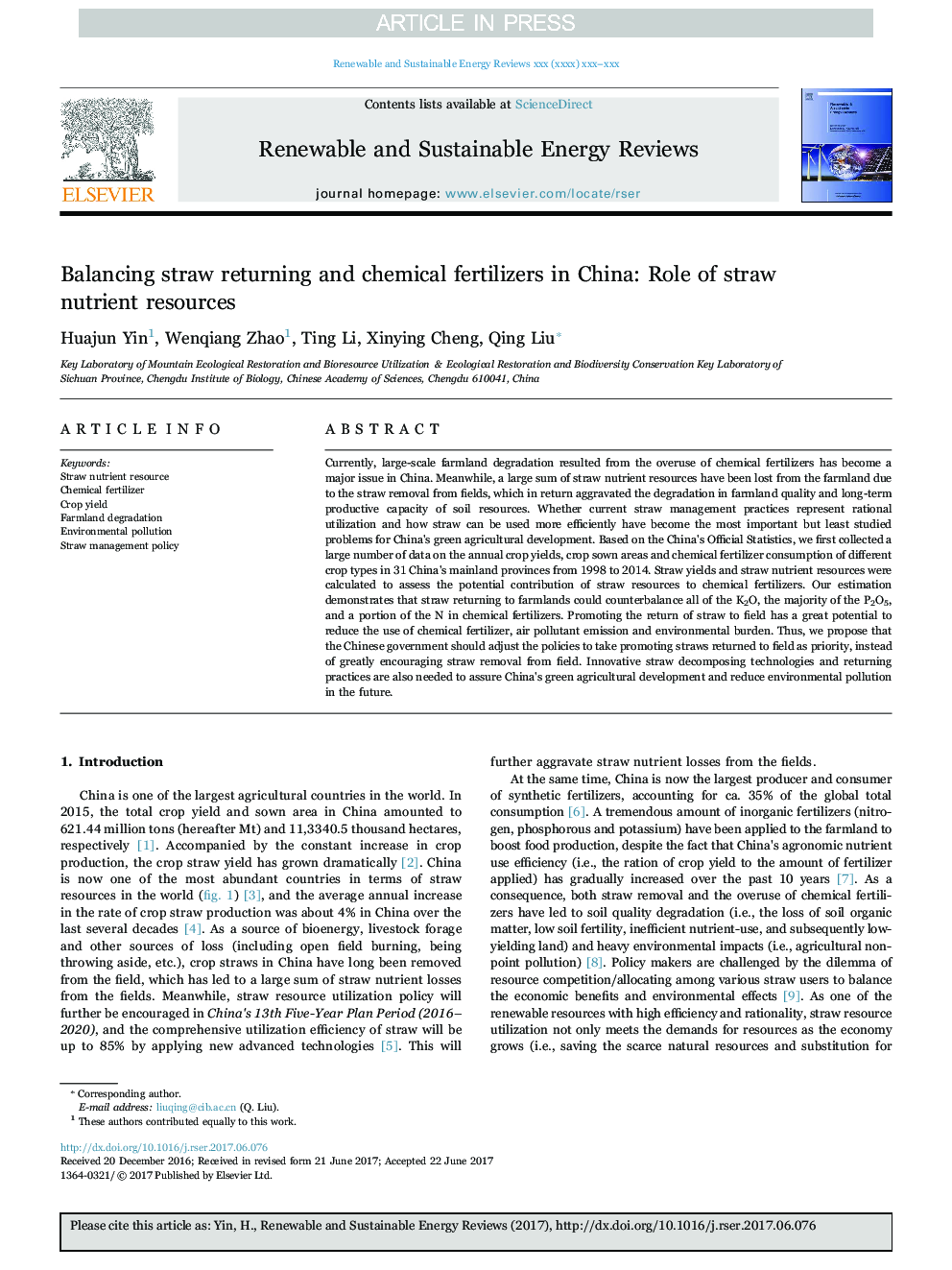| Article ID | Journal | Published Year | Pages | File Type |
|---|---|---|---|---|
| 8112418 | Renewable and Sustainable Energy Reviews | 2018 | 8 Pages |
Abstract
Currently, large-scale farmland degradation resulted from the overuse of chemical fertilizers has become a major issue in China. Meanwhile, a large sum of straw nutrient resources have been lost from the farmland due to the straw removal from fields, which in return aggravated the degradation in farmland quality and long-term productive capacity of soil resources. Whether current straw management practices represent rational utilization and how straw can be used more efficiently have become the most important but least studied problems for China's green agricultural development. Based on the China's Official Statistics, we first collected a large number of data on the annual crop yields, crop sown areas and chemical fertilizer consumption of different crop types in 31 China's mainland provinces from 1998 to 2014. Straw yields and straw nutrient resources were calculated to assess the potential contribution of straw resources to chemical fertilizers. Our estimation demonstrates that straw returning to farmlands could counterbalance all of the K2O, the majority of the P2O5, and a portion of the N in chemical fertilizers. Promoting the return of straw to field has a great potential to reduce the use of chemical fertilizer, air pollutant emission and environmental burden. Thus, we propose that the Chinese government should adjust the policies to take promoting straws returned to field as priority, instead of greatly encouraging straw removal from field. Innovative straw decomposing technologies and returning practices are also needed to assure China's green agricultural development and reduce environmental pollution in the future.
Related Topics
Physical Sciences and Engineering
Energy
Renewable Energy, Sustainability and the Environment
Authors
Huajun Yin, Wenqiang Zhao, Ting Li, Xinying Cheng, Qing Liu,
